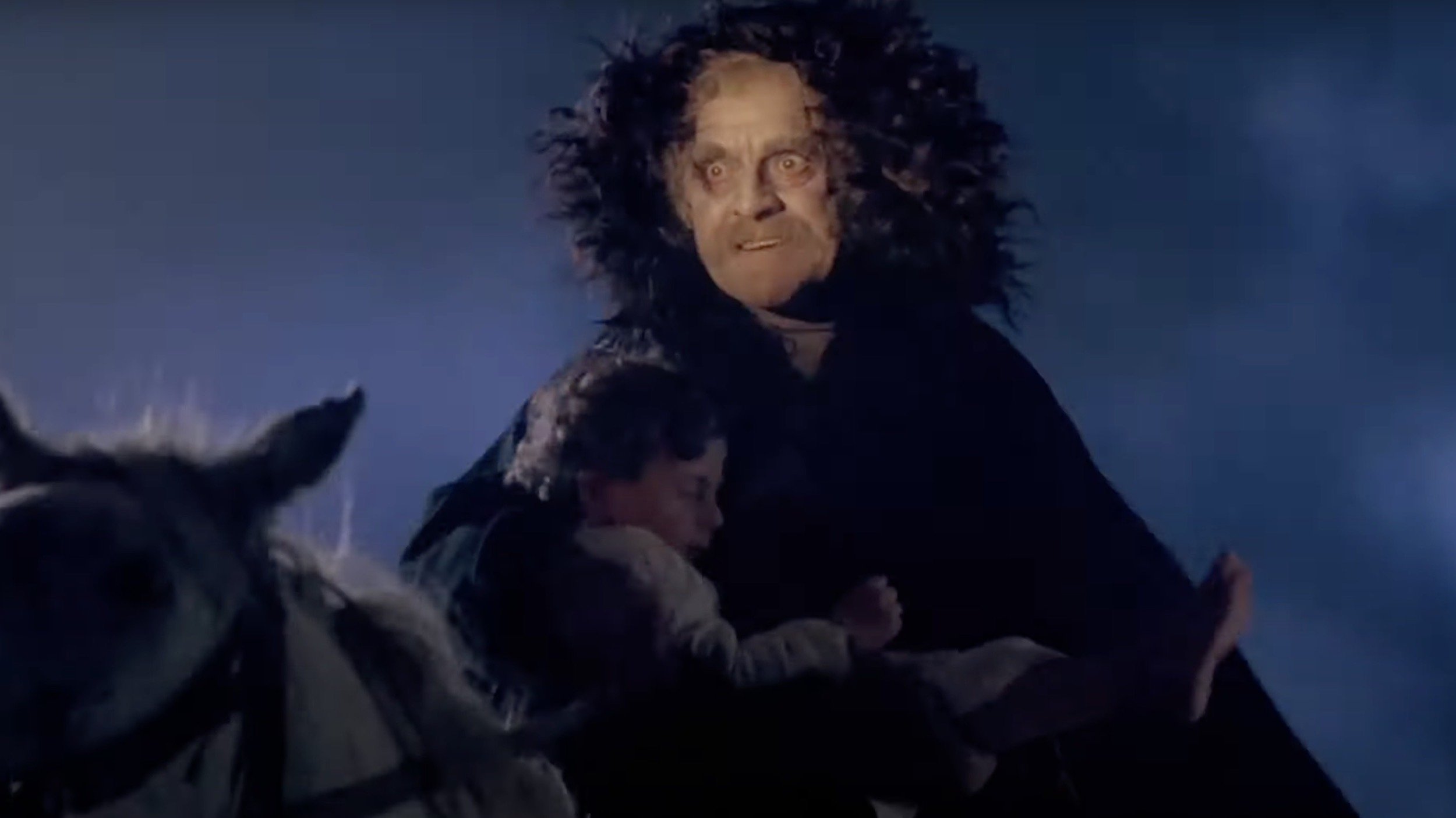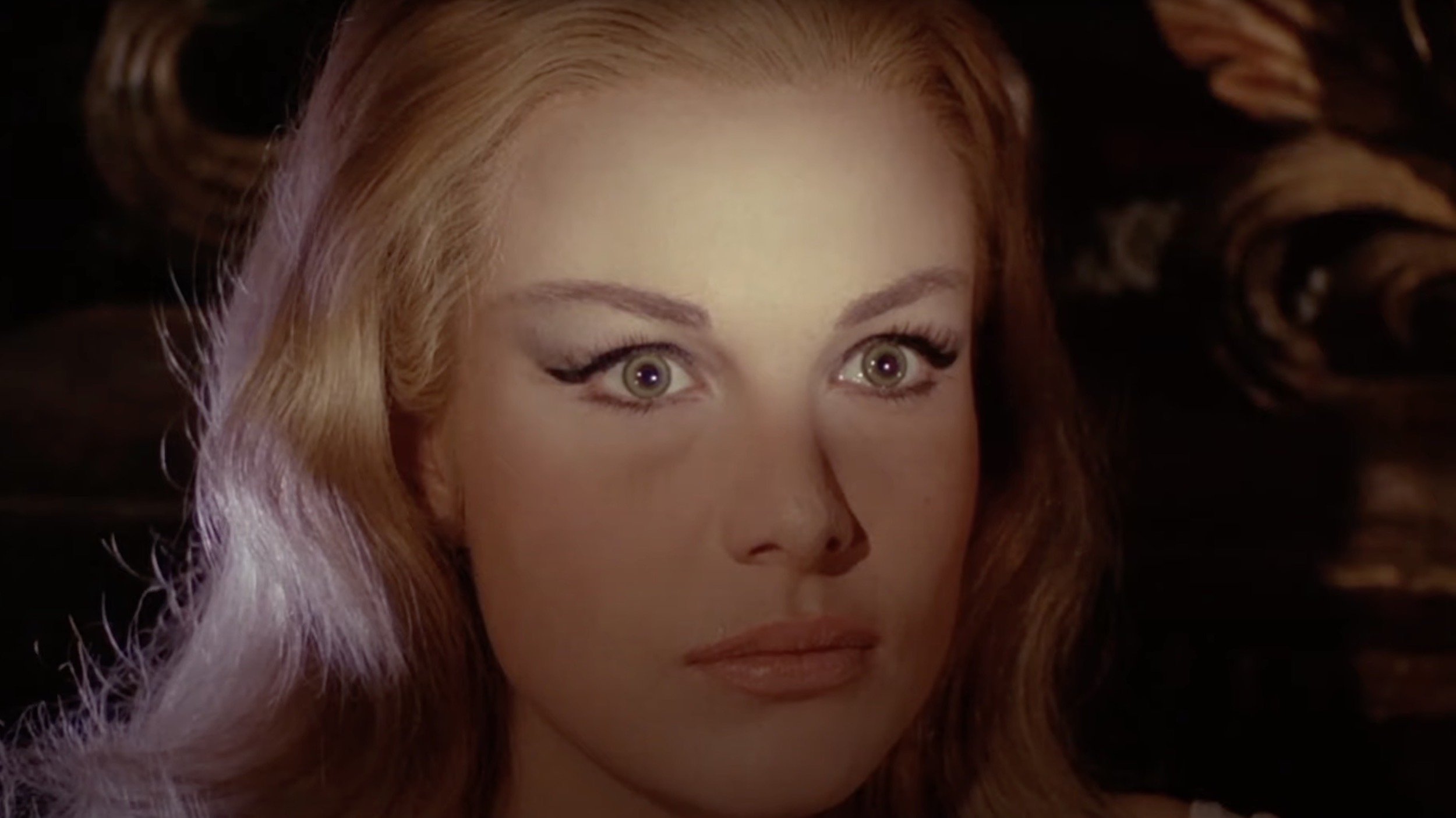‘The Wurdulak’ Brings Boris Karloff Back from the Dead as a Vampire Who Preys on Family
On this day in 1970, the heavy metal band Black Sabbath released its first self-titled album, but the band, the album, and the song of the same name might have gone by a different title if it weren’t for filmmaker Mario Bava.
“The Wurdulak” is one of the “three faces of fear” in Bava’s 1963 horror anthology, I tre volti della paura. Known in English as Black Sabbath, this movie was the namesake of Ozzy Osbourne’s band, and later, an influence on Pulp Fiction’s narrative structure.
The American version of Black Sabbath has non-phonetic, slightly out-of-sync dubbing, similar to the Spaghetti Western A Fistful of Dollars, released the following year. Its first two segments are “The Drop of Water,” which remains striking in its use of colored lighting, and “The Telephone,” which contains other elements associated with giallo films, such as a killer who stalks women and who is not fully revealed until the end.
Boris Karloff acts as the anthology’s Cryptkeeper-like host and he also enlivens “The Wurdulak” with his screen presence.
Story continues below
Karloff had an interesting, vampire-adjacent career, much of which Karina Longworth explored in the “Bela and Boris” season of her podcast, You Must Remember This. He first rose to stardom with his role as the Monster in Frankenstein in 1931, the same year that Bela Lugosi gave his seminal performance as the Count in Dracula.
It’s only fitting that these two Universal Classic Monsters made their screen debuts within months of each other, since the first published vampire story, John William Polidori’s “The Vampyre,” arose out of the same legendary storytelling contest that inspired Mary Shelley to write Frankenstein.
In the years immediately following James Whale’s film adaptation of Frankenstein, Karloff played another Universal Monster in The Mummy, co-founded the Screen Actors Guild, co-starred in several more Universal flicks with Lugosi, and reprised his breakthrough role in Bride of Frankenstein. However, there is only one movie in which Karloff himself ever played a vampire, and that is Black Sabbath.
‘And Now a Few Words About Vampires’
As Karloff himself explains while peeking out from behind a tree trunk between Black Sabbath segments, the title of “The Wurdulak” refers to “vampires who live only on the blood of those they love.” The wurdulak is a bloodsucker from Slavic folklore that preys on its own family. This particular segment is based on the 19th-century novella The Family of the Vourdalak by A.K. Tolstoy.
In “The Wurdulak,” we meet the family first before the hooded figure of Karloff’s character, the grandfather, Gorca, comes traipsing across a bridge and through the mud, back to the mist-shrouded Russian cottage where they all live. He returns to them a changed man after decapitating a bandit who was thought to be a wurdulak. Now, he’s as blue as a corpse, he won’t eat food (even though he’s hungry), and he’s quick to suggest killing his favorite dog and hanging a severed human/wurdulak head outside the cottage for all to see.
Story continues below
Does the dog die in “The Wurdulak?” Yes, but offscreen. Let that be a content warning for you. “The Wurdulak” goes to some dark places. Gorca also makes offhand remarks like, “What’s the matter, woman? Can’t I fondle my own grandson?”
These disturbing words, situated in the context of ‘60s parlance and the scene in which they’re spoken, are clearly meant in the sense of “tickle” or “caress” rather than molest. But “The Wurdulak” might also allow for a reading whereby the film’s vampirism becomes a metaphor for intrafamilial abuse. Either way, there’s nothing scarier than seeing Gorca pluck his grandson from bed and ride off with him in the night.
Spoilers for the ending of “The Wurdulak” in 3, 2, 1 …
Keeping Evil All in the Family
The wurdulak child at the door, moaning, “Mama, let me in,” is like something out of “The Monkey’s Paw.” It presaged the vampire boy at the window in Salem’s Lot (1979) and the reanimated son in Pet Sematary (1989), both adapted from Stephen King novels. Yet the ending of “The Wurdulak” more closely resembles the 2019 Pet Sematary remake, as a chain of unholy resurrections occurs and the blonde Sdenka (Susy Andersen) finds three undead family members converging on her. They want her to be part of the family.
Sdenka’s brother, Giorgio (Glauco Onorato), and his wife, Maria (Rika Dialina), both sport fresh bite marks on their neck. Gorca says, “No one can love you as much as we do.” All three then chime in telepathically with, “Why did you leave us?”
While the Dracula legend is founded on the xenophobic premise of an outsider from a foreign land bringing death to the civilized world, “The Wurdulak” reimagines the vampire threat as one that comes from the innermost family unit. It makes its hero an interloper named Vladimir (Mark Damon) who tries to rescue Sdenka from her cursed household.
Story continues below
Vladimir may also become part of the family. Like Lugosi, Sdenka appears with a strip of light over her wurdulak eyes and they take on the ability to hypnotize her suitor.
Bava’s film remains frightening in the way that it personalizes vampirism, using it to unravel and corrupt a family as Gorca turns his whole brood into bloodsuckers. If you’re the kind of guy who’s been warned that spending even one night with this family could prove fatal, don’t be surprised when one of them sinks her teeth into your neck.
After Black Sabbath, Karloff voiced the narrator and the Grinch in How the Grinch Stole Christmas and he played an aging horror star with the genre-appropriate name of Orlok in Peter Bogdanovich’s Targets. “The Wurdulak” showed that even at 75, Karloff held the power to terrify and leave his own unique contribution to the vampire mythos.





